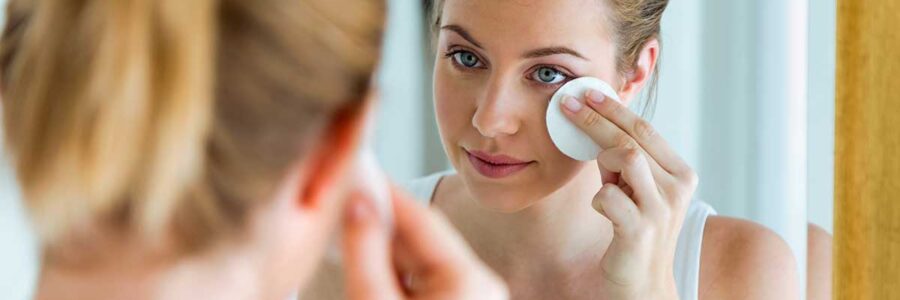Makeup removers are a staple in skincare routines, but most mainstream products come with synthetic chemicals that can affect skin and overall health. As a semi-permeable barrier, the skin can absorb a portion of what we apply to it, so choosing clean, non-toxic products is a simple way to reduce daily toxin exposure.
The Hidden Ingredients in Makeup Removers
Many popular makeup removers contain ingredients like isopropyl alcohol, synthetic fragrances, and preservatives that may do more harm than good:
- Isopropyl Alcohol: While it dissolves makeup, it strips the skin’s moisture, increasing sensitivity.[1]
- Artificial Fragrances and Parabens: These chemicals can irritate skin and disrupt hormone balance.[2]
These toxins can contribute to oxidative stress and inflammation when absorbed, potentially impacting skin and cellular health.
Choosing Natural Alternatives for Skin Health
Opting for natural ingredients like castor oil, jojoba oil, and aloe vera provides a safer, toxin-free approach to cleansing. These alternatives work effectively, dissolving makeup while nourishing and calming the skin.[3]
DIY Non-Toxic Makeup Removers: Easy Recipes
Here are two simple, natural recipes:
- Castor and Olive Oil Blend
- Ingredients: 1 tbsp castor oil, 2 tbsp olive oil.
- Instructions: Massage onto the skin to lift makeup, then rinse with warm water. This blend is gentle on the skin barrier, leaving it clean and hydrated.
- Coconut Oil and Aloe Cleanser
- Ingredients: 1 tbsp melted coconut oil, 1 tbsp aloe vera gel.
- Instructions: Apply to the skin, massage, and wipe away. Aloe soothes, while coconut oil dissolves makeup without irritation.
Switching to natural skincare options can help you protect your skin from unnecessary toxins, leaving it clean, refreshed, and free from harmful chemicals.
References:
- Toxicology, National Research Council (US) Committee on. “ISOPROPYL ALCOHOL.” Emergency and Continuous Exposure Limits for Selected Airborne Contaminants: Volume 2, National Academies Press (US), 1984.
- Anne, Beatrice, and Ruby Raphael. “Endocrine Disruptor Chemicals.” Endotext, edited by Kenneth R. Feingold et al., MDText.com, Inc., 2000.
- Goyal, Anju, et al. “Bioactive-Based Cosmeceuticals: An Update on Emerging Trends.” Molecules, vol. 27, no. 3, Jan. 2022, p. 828.


